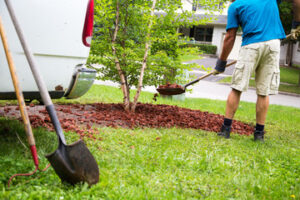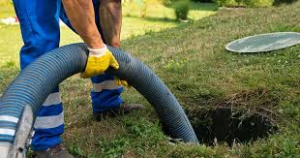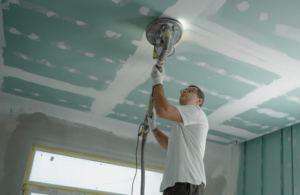Dust, pet dander, mold spores, mildew, chemicals and tobacco smoke accumulate in your home’s air ducts. They are then recirculated throughout your home daily, negatively impacting indoor air quality and contributing to allergy and asthma symptoms.

DIY duct cleaning kits are available, but they don’t provide the thorough clean that professionals do. Consider hiring an HVAC contractor certified by NADCA to perform a professional duct cleaning. Reach out to All Pro Services for expert assistance.
When dust, pet dander, mold and other allergens build up in your air ducts, they get distributed throughout the house every time you run your heating or cooling system. As a result, you may experience sneezing and watery eyes. If someone in your family has asthma, this can be very dangerous because the particles can trigger an attack. Having your air ducts cleaned regularly prevents the allergens from being circulated around the house and can help alleviate asthma symptoms.
As the winter ends, pollen and other outdoor allergens start to rise. This can make allergy and asthma symptoms worse in many households. Fortunately, regular cleaning of your air ducts can significantly reduce these contaminants and improve the quality of indoor air.
Dirty ducts can be a breeding ground for all kinds of microbes, including mold, bacteria and other pathogens. These pathogens can then be distributed through the ventilation system and into the living spaces, causing respiratory issues for anyone in the home. Air Duct Cleaning removes these unwanted elements from the ducts and seals them to keep them out in the future.
If you suffer from allergies or asthma, an air duct cleaning can drastically improve your health. The same can be said for new babies, as their delicate respiratory systems are highly susceptible to the pollutants in the atmosphere.
In order to clean the air ducts, a professional will use high-powered vacuum cleaners and brushes to remove the debris from the inside of the ducts. Depending on the condition of the ducts, they may also need to be sanitized with chemicals or pesticides. Before they begin the process, ask the contractor about what they will be using and make sure that nobody in your household has any allergies or sensitivities to these substances.
Allergies are one of the top chronic illnesses in America, and they can be caused by many different things. The most common are dust mites, mold spores, pet dander and pollen. The symptoms of allergies include sneezing, watery eyes, itchy nose or throat and a general feeling of being unwell. As the weather warms up and spring approaches, it’s a good idea to have your air ducts cleaned to avoid an allergic reaction in the house.
Reduces Irritants
Air ducts often collect a variety of contaminants that can cause health problems. Dust mites, fungus and mold, dead skin cells, pet dander and hair can all build up over time. These organic particles can irritate the nose, eyes and throat and can even be breathed into the lungs. They can trigger respiratory health conditions, auto-immune disorders and allergies. Additionally, dirt and debris in ductwork can strain HVAC equipment and cause it to work harder, reducing efficiency.
Air Duct Cleaning removes these harmful contaminant and improves indoor air quality. It is important to choose a professional service provider with a good reputation and experience. Check with your state licensing board to see what qualifications they recommend for contractors. Additionally, ask your service provider what type of ductwork they work on and what their process entails. Some services will apply chemical biocides and other encapsulants to the ductwork to control microbiological growth. While these methods can be effective, they are not without risk and should only be applied after the ductwork has been thoroughly cleaned.
When hiring an air duct cleaner, make sure they are licensed and insured. Ask them what types of equipment they use and about their experience working in homes like yours. Also, be aware that some ductwork materials are extremely fragile and one mistake could cause damage. If you have flexible ductwork, for example, it is highly recommended to have it professionally cleaned.
Once the technician arrives, you may want to tidy up your house a bit so that they can easily access all your vents. Then, they will start the air duct cleaning process. They will begin by closing all the supply vents to maximize negative pressure. Then they will use brushes and compressed agitation air whip tools to dislodge the settled dust. This can be quite noisy but is very effective.
Once the ducts are clean, the service provider will reopen all of the supply vents. They will then reinstall the registers and cover them with protective covers. Finally, they will test the system to ensure all parts are working properly.
Removes Unwanted Odors
Over time, your home’s ductwork can become filled with dust, dirt and debris, cooking residues, smoking, pet dander, mildew, mold spores and other undesirable contaminants. This can lead to stale smells when your heating or cooling system runs, as these unwanted smells are circulated throughout the house. Air Duct Cleaning can eliminate these unwanted odors by removing and sanitizing your home’s ductwork and vents, which will also improve the quality of your indoor air.
If you have noticed unpleasant odors coming from your home’s vents, it may be an indication that there is a problem with your HVAC system. If the odors are particularly musty, it could be the result of mold or mildew, which will require more thorough air duct cleaning than simply replacing the filters.
If the odors are more unpleasant, such as those that resemble the smell of rotten eggs, it could be a sign of natural gas leakage. This is a more serious issue, and you should contact your local gas company immediately to have the situation assessed and repaired.
Regardless of the source of the unwanted odors, it is important to address the situation quickly. Otherwise, the problem will likely recur.
Air duct cleaning is a process that involves sweeping, vacuuming and dry brushing the entire duct tunnel that leads to your home’s supply and return registers. This is an important part of the overall home maintenance and health maintenance plan, as it helps to reduce allergens, pollutants, irritants, odors and other contaminants. If you have concerns about the cleanliness of your home’s air, schedule an appointment for air duct cleaning today. The investment will pay off in improved indoor air quality and fewer respiratory problems for your family members.
Increases Efficiency
The modern trend in home building and window and door manufacturers is to make homes as airtight as possible to conserve energy. Unfortunately, this also traps dust and harmful contaminants inside the air ducts. These pollutants are pulled into the HVAC system and are re-circulated on average 5 to 7 times a day, where they build up over time. Cleaning your air ducts will remove these contaminant and help improve the indoor air quality in your home.
Allergens like pet dander, mildew, mold spores, and other microscopic organisms can trigger asthma attacks in sensitive individuals. The recirculation of these organisms in the house can cause health problems, especially in children and elders with compromised immune systems. Periodic air duct cleaning helps prevent these organisms from being circulated in the house, making it safer to live in for people with asthma and other respiratory conditions.
Other common irritants that may be trapped in the ductwork include paint fumes, tobacco smoke, chemical cleaners and other household products. These odors are re-circulated throughout the house and can linger, even after opening windows or using air fresheners. In addition, rodent droppings can get trapped in the ductwork and decompose, emitting foul odors in the process. Clean ducts will eliminate these odors and leave the home with a fresh, pleasant scent.
In addition, cleaning the air ducts can help to reduce your energy bills. When dust and other contaminates build up in the air ducts, the HVAC system has to work harder to maintain an optimal temperature. When the ducts are cleaned regularly, it allows the HVAC system to operate more efficiently, resulting in lower energy bills.
The benefits of air duct cleaning are vast, and should not be overlooked. The most important thing is to find a reputable professional that follows the National Air Duct Cleaners Association (NADCA) standards, and focuses on making their customers happy. A good company will give you an upfront price, and offer services that boost your HVAC efficiency and the air quality in your home or office.








